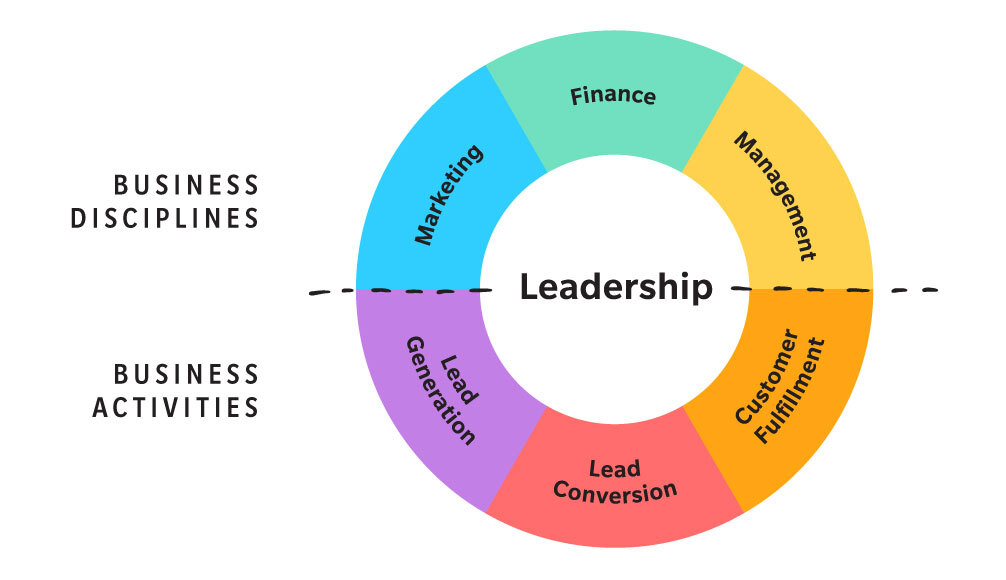Most small business owners we speak to about growing their companies spend the majority of their time making, selling or delivering their product or service. They know how to do the work the way they want it done, but they struggle getting other people to do it according to their standards. And when there’s a job to be done and only one person who knows how to do it properly, that person—the business owner—gets stuck. They have an abundance of skills to work in their business but a shortage of time to work on it.
If this sounds familiar to you, here’s the good news: Systems can stand in for you by giving your people the knowledge they need to do the work exactly the way you’d do it yourself. By documenting as you go, you can start designing your small business systems while simultaneously doing what you know how to do. And with the proper organization, you can ensure you’re covering all the bases without feeling overwhelmed or confused about what to do next.
Getting started with seven key business systems
Systematizing a business is a big, important undertaking—but don’t let it overwhelm you. Start with a few tasks you know intimately, things you do every day. As you begin building up your systems library, the Seven Essential Systems model will help you organize it. When all of these systems work together efficiently, they create a high-performing business.
The seven systems model looks like this:

To make these seven systems function efficiently, you can design them to work together, allowing your business to operate as an integrated whole. Here’s a four-step systems strategy to help you do that:
1. Write down how you do it
The easiest way to start designing systems is by documenting what you do while you’re doing it yourself. Take a minute to write each step down, or record yourself talking through the steps as you perform them—whatever it takes to ensure you don’t miss a single detail. Be sure to include why you choose to do things a certain way; these are the details that set your business apart.
Consider this analogy: One of my favorite chefs, Thomas Keller, wrote the perfect beef stew recipe by actually watching himself make it. He documented every single step, telling home cooks exactly what cut of beef to use, what size the leeks should be, how to tie a bundle of herbs, how the reduced wine should look at just the right moment. The recipe was much longer and more detailed than the usual stew recipe, but when I followed every step, doing what he did the way he did it when he cooked it himself, the result was nothing short of astonishing.
Stew is such a common dish that many don’t even bother with a recipe, but this stew went far beyond the usual comfort food. By writing down exactly what steps he took to create this world-class dish, Thomas Keller ensured that any home cook could pick up that recipe, do it his way and get the same amazing result.
Think of your finished product or service as an exceptional dish you want to delight your customers with again and again. Your system is the recipe. If you want your people to be able to make the dish just like you do, give them a full list of ingredients, steps and standards. Leaving anything out may still produce a pot of stew—but it won’t be world class.
2. See how it works
Once you’ve written down your system—your “recipe”—test it by turning it over to someone else and having them work it. This is how you begin to implement your systems into the business. Does their finished dish come out the same as yours?
Thinking back again to Thomas Keller’s beef stew, I spent years using his recipe for inspiration. Overwhelmed by the long list of ingredients and steps, I’d skip over the hardest parts, throwing everything in the pot and getting a decent stew at the end.
But one year, I followed his recipe to the letter. I cooked all day, taking care to do everything just as Chef Keller instructed. I served the stew for a New Year’s Eve dinner, and when a friend spooned a bite into his mouth, his head snapped back in amazement—that’s how good it was. I hadn’t just made a familiar dish; by following each and every one of Thomas Keller’s steps, methods and standards, I’d made a world-class pot of stew, and my guests could taste the difference.
3. Make adjustments
This is the measure of a successful system: When you hand your instructions over to someone else to perform, do they get the same results you do? If not, it’s time to innovate and develop your system, editing it by adding a step or adjusting a standard to get closer to your desired outcome.
After you’ve made each individual change, hand the system back over and test it again so you'll know whether the change led to a different outcome, for better or worse. Rinse and repeat until you’ve got a set of instructions that will get the job done your way every time, no matter who’s doing the work.
4. Work together to implement and measure
As the business owner, it’s ultimately your responsibility to lead the design and implementation of your business’s systems. But getting your team involved is important—once your systems are in place, your employees will be the ones using them the most. And since your employees don't have your expertise in how to do it right, they'll be able to spot gaps and missteps you might overlook in the systems you've created.
Coach your team to think through each system you’ve designed, and be open to hearing their thoughts on how it could be more consistent and efficient. With your guidance and input, empower them to innovate and help design systems on their own. And like before, ask them to name, document and test each system until you’ve come together as a team to build a whole network of systems that gets the work done your way without ever being dependent on any one person.
With the right systems in place, you’ll be freer to spend your time growing your company. For more help getting started, download our free Systems Guide or reach out to us.




Comments